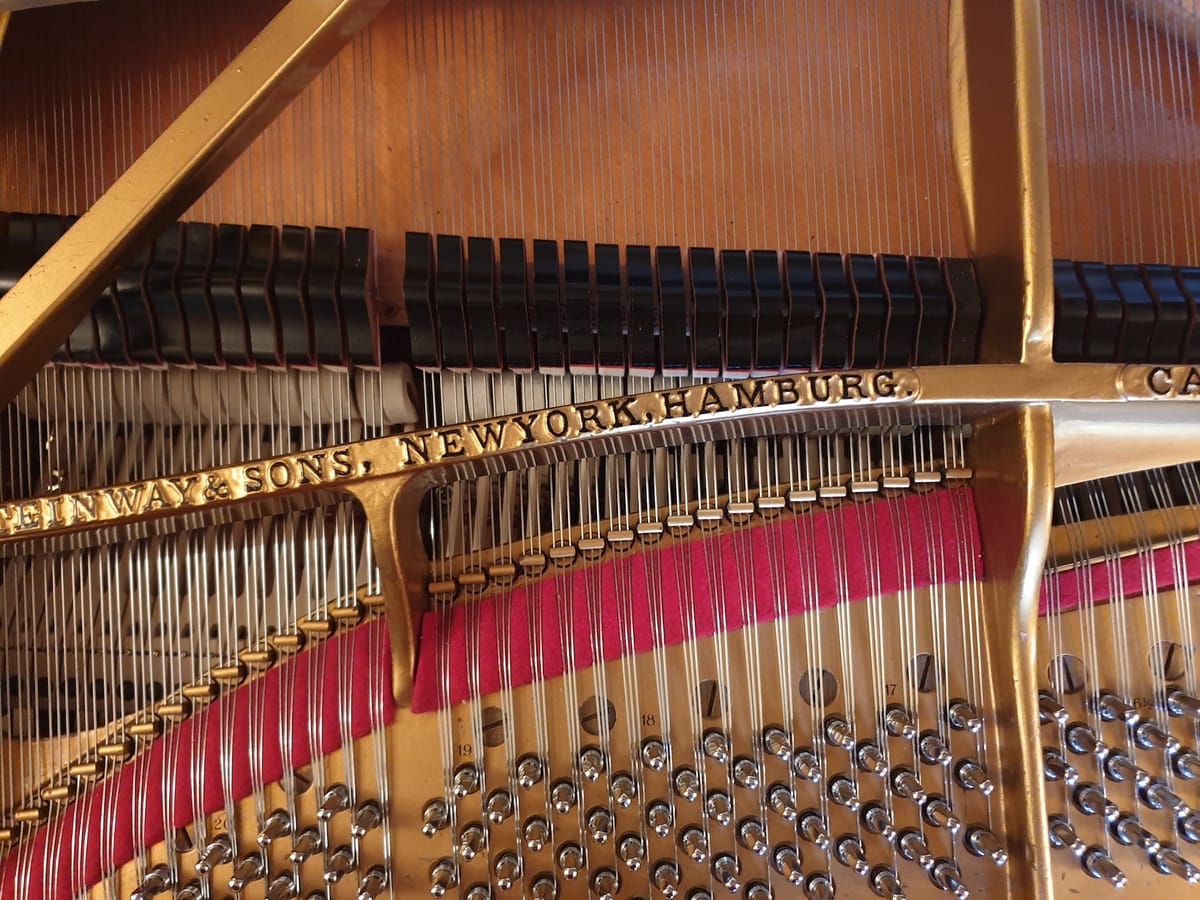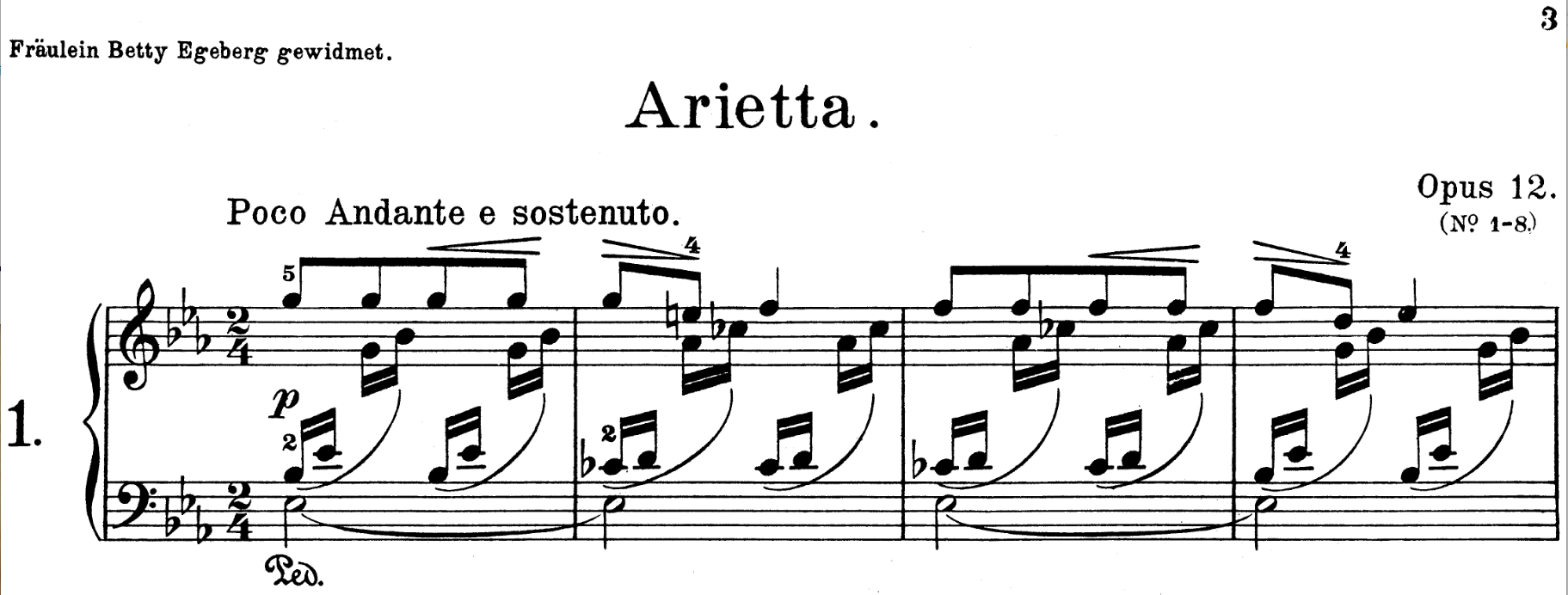The Sustaining Pedal: the Soul of the Piano

When we were children, my sister and I called the pedal on the left, the ‘soft’ pedal and the pedal on the right the ‘loud’ pedal. The left pedal on an upright piano is indeed the soft pedal but on a grand piano the mechanism is different and the correct term is the una corda. If an upright piano has a middle pedal it will often be a practice pedal that muffles the sound to avoid disturbing the neighbours but on a grand piano the mechanism and effect are different and it is, instead, the sostenuto pedal which selectively sustains chosen notes. The right pedal is correctly named the sustaining pedal. It is also called the damper pedal because depressing it lifts the dampers off the strings. Most people just call it ‘the pedal’, which is how I will refer to it now. The pedal has two purposes; it enhances the resonance of the sound (rather than intentionally increasing the volume) and it allows the notes to sustain for longer, even when the fingers have released the keys.
Dampers and the pedal
The foot-operated damper pedal (as opposed to the earlier knee-levers) was introduced in the 1770s and patented by the piano manufacturer John Broadwood in 1783. When a note is played, its damper lifts off the strings to allow them to sound, falling back to the strings to stop the sound when the pianist’s finger leaves the key. The piano needs dampers because, without them, the notes would continue to sound for longer, creating blurring between notes and harmonies. Dampers allow the performer a range of articulation styles, such as staccato, lightly detached or legato. Depressing the pedal lifts all the dampers off the strings. The pedal was originally regarded as a kind of special effect and composers did not begin writing pedalling directions into their music until around the end of the eighteenth century. Mozart, for instance, left no pedalling indications whereas the later Beethoven included them in some of his scores. The more the instrument developed in power and resonance, the more important the dampers and the pedal became.
Using the pedal for tonal beauty
When the pedal is down, all the dampers are lifted causing other strings to vibrate in sympathy with each note that has been sounded, producing harmonics of different notes that give extra sonority. If you hold down the pedal then, with your finger, firmly touch the strings of a note you just played to stop them vibrating, you will still hear that note sounding via the unstopped strings. The historical development of the piano into a more resonant-toned instrument with a better pedal mechanism went hand in hand with the Romantic era trend towards favouring tonal beauty. Composers such as Chopin created pieces with lyrical melody lines supported by an accompaniment, which replied more and more on the use of the pedal. Here is Chopin’s lovely Nocturne Opus 27 number 2, for which he gave pedalling directions, played by Rubinstein who considered the pedal to be the ‘soul of the piano’.
The effect of the pedal on tonal balance
The extent and use of the pedal is related to the way in which we balance the melody and accompaniment textures. The pedal enhances the bass notes and, especially, any chords in the mid-range of the piano so special care must be taken to project and shape the melody line, balancing the accompaniment sensitively.
Here is the start of Grieg’s Arietta from the Lyric Pieces:

Listen to how the textures are balanced in these examples of bar 1. In both examples you hear the inner semiquavers first, then the bass note is added, then the melody line:
Example 1 is not good. All the parts sound the same loudness.
Example 2 is much better. The melody line sings above the accompaniment.
Compare these complete recordings of Arietta:
Example 1
Here the pedalling is cleanly done. However, there is little musical shaping with poor balance between the melody and accompaniment, particularly when the accompanying figure is in the mid-range of the keyboard.
Example 2
This interpretation demonstrates sensitive textural balance of the melody and accompaniment, musically shaped lines and accomplished pedalling.
Fun with the dampers!
The dampers can be used in more creative ways too. Try holding some of the black keys down with one hand to keep the dampers lifted, then play other black key notes quite loudly, then listen. You will hear notes from the strings that have the dampers lifted. A modern piece that uses this ‘trick’ is Ghostly Conversations by Paul Harris. This particular recording has some scary owl sounds added too!
It is not possible to create exactly the same effect when using an electronic piano because there is no sympathetic string vibration, although the most sophisticated electronic pianos now include string resonance which emulates the more sonorous, pedalled sound of the acoustic piano. Here is Ghostly Conversations played on an electronic piano; notice that the ‘ghostly’ sounds are absent.
In the second article on pedalling we will look at different ways of pedalling, including how to teach and learn successful pedalling.





